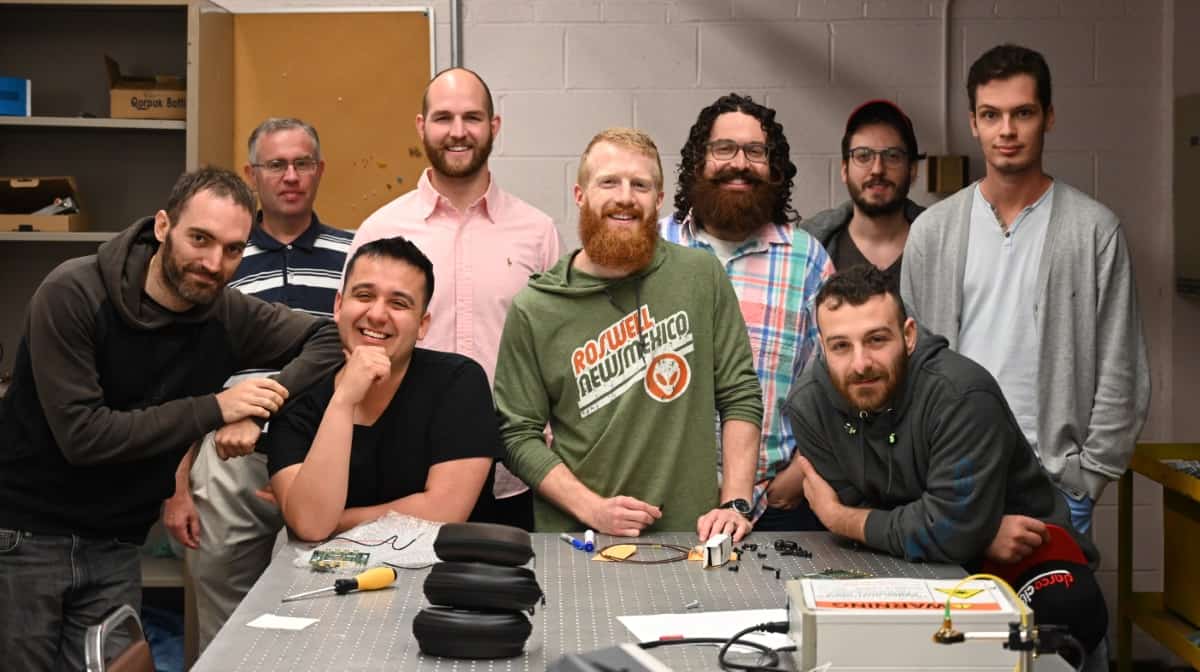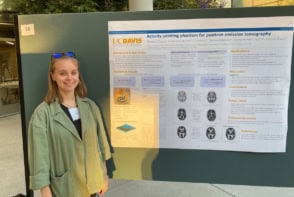
A research team at the University of Kansas (KU) is developing a particle telescope to analyse charged particles emitted by the sun. The technology could also be used to measure doses delivered to patients during radiation therapy. So, what will be the key purpose of the telescope? And what work is underway to deepen understanding of its current and potential clinical applications?
Cosmic rays
The main purpose of the Advanced Energetic Ion Electron Telescope (also known as AGILE) is to identify particles in cosmic rays and to measure their energies. As KU project leader Christophe Royon explains, this twin function is particularly useful because it is currently “very difficult to do both with a small solid-state detector”.
“This new telescope will be a breakthrough for NASA,” he says. “The idea is to use several layers of silicon sensors and to digitize the signal produced by the sensors following the passage of a particle. This signal is then analysed to identify the particle type — electron, proton, oxygen, nitrogen and so on — and to measure its energy.”
Following the recent award of a $1.4 million grant from NASA, Royon and his team have embarked on a three-year project to design, produce and test a first prototype of the detector. The team will begin by simulating the response of the detector to different particles and different energies — before embarking on a second stage focused on measuring the response of the detector to a variety of beams of protons, electrons and heavy ions, using facilities at the Brookhaven National Lab or Los Alamos National Laboratory to tune the simulations.
“Usually, the signal emitted by a silicon sensor is quite low and it needs to be amplified. At KU, we patented a new amplifier with striking performances that will be used in those applications,” Royon explains.

The final step of the project will be to install the detector inside a CubeSat — a type of miniaturized satellite commonly used in space-based research — which will help to optimize power consumption, radiation hardness and the amount of data transmitted to Earth from orbit. Longer term applications involve the development of a network of hundreds of small satellites that are able to monitor the radiation levels around the earth. This is useful, among other things, to estimate the radiation that astronauts would be exposed to during their trips, for example during a flight to Mars.
Clinical applications
An interesting spin-off of the AGILE technology is the potential to use it in clinical settings — particularly for measuring the amount of radiation being absorbed by a patient undergoing radiotherapy. As Royon points out, the difficulty in measuring the exact dose of radiation accumulated inside patients with good resolution is currently a “big issue in cancer treatment”.
“We use a silicon detector to measure radiation in space and our idea is to use a similar technology to monitor in real time the radiation produced by medical particle accelerators,” he explains. “This project is just in its infancy, but all hospitals in the world are dreaming of getting high resolution measurements of the dose received by patients during cancer treatment.”
According to Royon, improving the spatial resolution of the detectors used to measure doses delivered during cancer treatments will allow clinicians to optimize the dose received by the patient and increase the effectiveness of radiation treatments. As a result of the completely new approach to these types of measurements being developed for the space-based project, Royon is also confident that clinical applications will be able to evolve quickly, generating innovative ways to improve radiation treatments.
Looking ahead, Royon reveals that he and his team are now very keen on working alongside the KU Medical Center in an effort to explore potential clinical applications in more detail — and to further understand the challenges faced in adapting the technology for use in radiotherapy.
“We are starting frequent meetings with the support of the vice-chancellor for KU medical research,” he says. “The challenge, on our side, is to understand in more detail the medical aspects and how radiation or low-energetic particles interact with the human body. This is where the collaboration with medical physicists is essential in order to make progress.”
“I can also mention our collaboration with a hospital in Dublin, Ireland, where we used our detectors to characterize a beam to treat patients and we could understand in detail the beam structure,” he tells Physics World.



